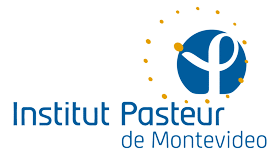Molecular and Structural Microbiology
The Laboratory of Molecular and Structural Microbiology (LMSM) seeks to understand how bacteria sense signals from their environment and internal milieu, to thereafter respond and adapt. Pathogenic bacteria are a particular interest, focused on the Spirochete genus Leptospira.
Signaling is mediated by proteins, which change their 3D structures in a signal-dependent way, structures that are often stabilized by phosphorylation. Phosphoryl-transfer along such signal transduction pathways is thus a key enzymatic reaction, the mechanistic features of which our lab wants to uncover at the molecular level. Our lab uses X-ray crystallography, to image the 3D structures of target proteins, such as sensory histidine kinases and response regulators, alone and in complex.
By combining these high-resolution images with other sources of information —especially issued from biochemistry, genetics and microbiology experiments— we wish to understand the function and then contribute to the development of applications, such as vaccines against microbial diseases.
The Leptospira genus comprises many species, at least 10 of them cause a serious disease: leptospirosis. This zoonosis (that is, a disease that transmits from animals to humans), affects the reproductive capacity of cattle in Uruguay. It also causes an acute disease in humans, sometimes deadly, for which there are still no effective vaccines. Signaling systems in Leptospira shall uncover virulence and pathogenesis mechanisms, still poorly understood in these spirochetes. Key virulence proteins will be attractive targets to develop intervention strategies, and effectively control the zoonosis, with anticipated veterinarian and public health applications.
Members







Research lines
Signaling and regulation in microorganisms
We are particularly interested in two component systems (TCS) in bacteria. TCSs are central in mediating signaling and regulation, almost ubiquitous in prokaryotes and archaea, they are also present in fungi and plants. Other regulatory proteins, such as one component systems, are also being studied. The general question behind this line of research is: how do cells use these sensory and regulatory proteins to detect extra- and intra-cellular signals, and then regulate specific functions? To answer this question, saprophytic bacteria (such as Bacillus subtilis and Leptospira biflexa) are studied, as well as pathogenic ones (Leptospira interrogans, L. borpetersenii, L. noguchii, Enterococcus faecium, Mycobacterium tuberculosis). In these models, several key biological processes are studied, such as the regulation of lipid synthesis (Albanesi et al., Proc Natl Acad Sci USA 2009, 106: 16185, Trajtenberg et al., J Biol Chem 2010, 285: 24892, Trajtenberg et al. al., mBio 2014, 5: e02105; Trajtenberg et al., eLife 2016, 5: e21422; Imelio et al., Bio-protocol 2017, 7: e2510; Lara et al., 2018 submitted), heme metabolism (Morero et al., Mol Microbiol 2014 , 94: 340), or virulence in pathogenicity (Adhikarla et al., Front Cell Infect Microbiol 2018, 8:45).
Molecular and structural biology of Leptospira
Different species of Leptospira cause leptospirosis. This zoonosis is the most widespread one around the world, reemerging as an important problem in human and animal health. In Uruguay, it is a significant issue, provoking cattle abortions and reproductive failure, and transmitting to humans causing acute disease. Our lab wants to elucidate the molecular mechanisms that determine and/or regulate virulence and pathogenicity in Leptospira. There are currently two main projects to do this: the study of the motility apparatus and systematic efforts to isolate and type local Leptospira strains in Uruguay.
i- The motility apparatus of Leptospira. Active translational motility of leptospira (swimming) is central for the virulence of the pathogenic species that cause leptospirosis. The essential organelle used for swimming is the flagellum. Our lab is currently studying the detailed molecular architecture of the flagellar appendage. The filament of these spirochetes’ flagella is confined within the periplasm, a unique feature shared by all Spirochetes, including bacteria like Treponema pallidum (the agent of syphilis) or Borrelia burgdorferi (Lyme disease). In collaboration with the Ko and Sindelar labs in Yale University, as well as the Picardeau lab at the Institut Pasteur (Paris), we have shown that the flagellar filament from Leptospira is much more complex compared to better-known bacterial models used so far as a paradigm of swimming motility in bacteria. As an example, filaments from Salmonella and other Enterobacteria are built as homopolymers of a single protein species (flagellin), whereas Leptospira comprise at least eight different proteins polymerized into the periplasmic filament assembly (Wunder et al., Mol Microbiol 2016, 101: 457; San Martin et al., Acta Crystallogr F 2017, 73:123; Wunder et al., Front Cell Infect Microbiol 2018, 8:130). We have recently crystallized two new proteins from both pathogenic and saprophytic Leptospira spp. (San Martín et al., Acta Crystallogr F 2017, 73:123),and solved their 3D structures (unpublished results), revealing novel protein folds. We are now moving forward towards their physiological interactions and interaction partners, enabling for the flagellar filament role in spirochete motility.
ii-Isolation and typing of autochthonous Leptospira spp. strains. This line is being developed in the context of a multicentric collaborative project, aims to isolating native strains from Leptospira spp. from biological samples obtained from infected cattle and other animal reservoirs. These isolates are typed by complementary techniques: classic serologic methods and novel molecular approaches, ultimately achieving greater sensitivity and specificity (Zarantonelli et al., PLoS Negl Trop Dis 2018, 12:e0006694). This effort has led to the creation of a biobank of strains of Leptospira, which up to now was not available in Uruguay, reporting the identity of the serovars that circulate in natural infections. This biobank will be useful in the formulation of more efficacious vaccines, in the improvement of diagnostic methods, as well as in further investigations of leptospirosis in Uruguay.
Collaborations
Our lab works in collaboration with Dr. Hugo Gramajo (Institute of Molecular and Cellular Biology, IBR, Rosario, Argentina) and his team, to elucidate crystallographic structures and mechanisms of action of Mycobacterium tuberculosis transcription factors (one component regulator systems), playing essential roles in regulating fatty acid metabolism in this pathogen.
We also collaborate with Dr. Mathieu Picardeau (Institut Pasteur, Paris, France) and Dr. Albert Ko (Yale University, New Haven, USA) on motility of Leptospira and pathogenesis mechanisms of these bacteria at the molecular level.
In addition, our lab integrates a multicentric consortium in Uruguay, working together with teams from the Veterinary Laboratories Division (“Miguel C Rubino” DILAVE) of the Ministry of Livestock, Agriculture and Fishery (Alejandra Suanes, Rodolfo Rivero), National Institute of Agricultural Research (Franklin Riet), Hygiene Institute at the Medical School (Felipe Schelotto), addressing problems of isolation, typing, diagnostics and genomics of Leptospira.
Courses
- Theoretical-practical workshop: “Isolation of Leptospira spp. strains from field cases of bovine leptospirosis” (2014) Institut Pasteur de Montevideo, INIA (La Estanzuela); Universidad de la República, Hygiene Institute, School of Medicine; and DILAVE (Ministry of Livestock, Agriculture and Fishery), with invited professor from Massey University (New Zealand).
- Theoretical-practical workshop: “Integrative methods in Structural Biology to enhance high impact research in health and disease” (2016) Institut Pasteur de Montevideo, co-organized by Oxford University and Instruct, the European Network of Structural Biology.
Projects
2023-2025 – “Amplifying RI impact with a global perspective: a Regional Hubs model” – ANII Programa Internacional 4th EU-LAC Joint Call in STI 2022 – Responsable: Alejandro Buschiazzo
2022-2024 – “Reprogramacioìn bacteriana a traveìs de la ingenieriìa de sistemas de senÞalizacioìn” – ANII Fondo Clemente Estable FCE_1_2021_1_166888 – Responsable: Felipe Trajtenberg
2020-2023 – “Estudio de la eficacia de una vacuna anti-leptospira en bovinos naturalmente expuestos a la infección” – ANII Fondo Sectorial de Salud Animal FSSA_1_2019_1_160195 – Responsable: Leticia Zarantonelli (UMPI, IPMontevideo)
2020-2023 – “Structural and functional characterization of a Dot1-like methyltransferase encoded by Legionella pneumophila: bacteria-induced epigenetics?” – Institut Pasteur Transversal Research Projects program PTR-18-CE15-0027-01 – Responsable: Monica Rolando (Instiut Pasteur)
2019-2023 – “Estudios de virulencia y patogenicidad de aislamientos autoìctonos de Leptospira spp.: definicioìn de antiìgenos bacterianos para la formulacioìn de vacunas de uso veterinario” – ANII Innovagro FSA_1_2018_1_152689 – Responsable : Leticia Zarantonelli (UMPI, IPMontevideo)
2019-2023 – “Molecular mechanism of spirochetal motility: the endoflagellum of Leptospira as a working model” – Agence National de la Recherche (Francia) ANR-18-CE15-0027-01 – Responsable: Mathieu Picardeau (Institut Pasteur)
Main publications
vacio
2023
-
Lima, S., Blanco, J., Olivieri, F., Imelio, J.A., Nieves, M., Carrión, F. et al. (2023) An allosteric switch ensures efficient unidirectional information transmission by the histidine kinase DesK from Bacillus subtilis. (2023) Sci. Signal., vol. 16, issue 769. Full-text PDF
-
Nieves, M., Buschiazzo, A. and Trajtenberg, F. (2023) Structural features of sensory two component systems: a synthetic biology perspective. Biochemical Journal. 480, 127-140 https://doi.org/10.1042/
BCJ20210798
2022
- Horizontal transfer of the rfb cluster in Leptospira is a genetic determinant of serovar identity. Nieves, C., Vincent, A.T., Zarantonelli, L., Picardeau, M., Veyrier, F.J., Buschiazzo, A. (2022) Life Science Alliance 6 (2)
- San Martin, F., Fule, L., Iraola, G., Buschiazzo, A., Picardeau, M. Diving into the complexity of the spirochetal endoflagellum. (2022) Trends in Microbiology
- Mondino, S., San Martin, F., Buschiazzo, A. (2022) 3D cryo-electron microscopic imaging of bacterial flagella: novel structural and mechanistic insights into cell motility. Journal of Biological Chemistry, 102105
- Matto C, D’Alessandro B, Mota MI, Braga V, Buschiazzo A, Gianneechini E, Varela G, Rivero R. (2022) Listeria innocua isolated from diseased ruminants harbour minor virulence genes of L. monocytogenes. Vet Med Sci. 8(2), 735-740. doi:10.
1002/vms3.710
2021
- Bardeci NG, Tofolón E, Trajtenberg F, Caramelo J, Larrieux N, Rossi S, Buschiazzo A, Moreno S. (2021) The crystal structure of yeast regulatory subunit reveals key evolutionary insights into Protein Kinase A oligomerization. J Struct Biol. 213, 107732 DOI: 10.1016/j.jsb.2021.107732
- Morande PE, Yan XJ, Sepulveda-Yanez JH, Seija N, Marquez ME, Sotelo NS, Abreu C, Crispo M, Fernández-Graña G, Rego N, Bois T, Methot SP, Palacios F, Remedi V, Rai KR, Buschiazzo A, Di Noia JM, Navarrete MA, Chiorazzi N, Oppezzo P. (2021) AID overexpression leads to aggressive murine CLL and non-Ig mutations that mirror human neoplasms. Blood. 138, 246-258 DOI: 10.1182/blood.2020008654
- Imelio, J. A., Trajtenberg, F. and Buschiazzo, A. (2021) Allostery and protein plasticity: the keystones for bacterial signaling and regulation. Biophys Rev. 13, 943-953 https://doi.org/10.1007/s12551-021-00892-9
- Fule L, Halifa R, Fontana C, Sismeiro O, Legendre R, Varet H, Coppée JY, Murray GL, Adler B, Hendrixson DR, Buschiazzo A, Guo S, Liu J, Picardeau M. (2021) Role of the major determinant of polar flagellation FlhG in the endoflagella-containing spirochete Leptospira. Mol Microbiol. 116(5),1392-1406. doi: 10.1111/mmi.14831
2020
- Lara J, Diacovich L, Trajtenberg F, Larrieux N, Malchiodi EL, Fernández MM, Gago G, Gramajo H, Buschiazzo A. (2020) Mycobacterium tuberculosis FasR senses long fatty acyl-CoA through a tunnel and a hydrophobic transmission spine. Nat Commun. 11, 3703 DOI: 10.1038/s41467-020-17504-x
- Macías-Rioseco M, Silveira C, Fraga M, Casaux L, Cabrera A, Francia ME, Robello C, Maya L, Zarantonelli L, Suanes A, Colina R, Buschiazzo A, Giannitti F, Riet-Correa F. (2020) Causes of abortion in dairy cows in Uruguay. Pesqui Vet Bras. 40, 325-332 DOI: 10.1590/1678-5150-PVB-6550
- Gibson KH, Trajtenberg F, Wunder EA, Brady MR, San Martin F, Mechaly A, Shang Z, Liu J, Picardeau M, Ko A, Buschiazzo A, Sindelar CV. (2020) An asymmetric sheath controls flagellar supercoiling and motility in the leptospira spirochete. Elife. 9, e53672 DOI: 10.7554/eLife.53672
- Trajtenberg F, Buschiazzo A. (2020) Protein Dynamics in Phosphoryl-Transfer Signaling Mediated by Two-Component Systems. Methods Mol Biol. 2077, 1-18 DOI: 10.1007/978-1-4939-9884-5_1
2019
- Buschiazzo A, Trajtenberg F. (2019) Two-Component Sensing and Regulation: How Do Histidine Kinases Talk with Response Regulators at the Molecular Level? Annu Rev Microbiol. 73, 507-528 DOI: 10.1146/annurev-micro-091018-054627
- Nieves C, Ferrés I, Díaz-Viraqué F, Buschiazzo A, Zarantonelli L, Iraola G. (2019) Draft Genome Sequences of 40 Pathogenic Leptospira Strains Isolated from Cattle in Uruguay. Microbiol Resour Announc. 8, e00893-19 DOI: 10.1128/MRA.00893-19
- Alvarez CE, Bovdilova A, Höppner A, Wolff C-C, Saigo M, Trajtenberg F, Zhang T, Buschiazzo A, Nagel-Steger L, Drincovich MF, Lercher MJ, Maurino VG. (2019) Molecular adaptations of NADP-malic enzyme for its function in C4 photosynthesis in grasses. Nat Plants. 5, 755-765 DOI: 10.1038/s41477-019-0451-7
- Ortiz C, Botti H, Buschiazzo A, Comini MA. (2019) Glucose-6-Phosphate Dehydrogenase from the Human Pathogen Trypanosoma cruzi Evolved Unique Structural Features to Support Efficient Product Formation. J Mol Biol. 431, 2143-2162 DOI: 10.1016/j.jmb.2019.03.023
2018
- Conformational plasticity of the response regulator CpxR, a key player in Gammaproteobacteria virulence and drug-resistance.
Mechaly AE, Haouz A, Sassoon N, Buschiazzo A, Betton JM, Alzari PM. J Struct Biol. 2018 Nov;204(2):165-171. doi: 10.1016/j.jsb.2018.08.001. Epub 2018 Aug 4. - Isolation of pathogenic Leptospira strains from naturally infected cattle in Uruguay reveals high serovar diversity, and uncovers a relevant risk for human leptospirosis. Zarantonelli L, Suanes A, Meny P, Buroni F, Nieves C, Salaberry X, Briano C, Ashfield N, Da Silva Silveira C, Dutra F, Easton C, Fraga M, Giannitti F, Hamond C, Macías-Rioseco M, Menéndez C, Mortola A, Picardeau M, Quintero J, Ríos C, Rodríguez V, Romero A, Varela G, Rivero R, Schelotto F, Riet-Correa F, Buschiazzo A; Grupo de Trabajo Interinstitucional de Leptospirosis Consortium. PLoS Negl Trop Dis. 2018 Sep 13;12(9):e0006694. doi: 10.1371/journal.pntd.0006694. eCollection 2018 Sep.
- SIMBAD: a sequence-independent molecular-replacement pipeline. Simpkin AJ, Simkovic F, Thomas JMH, Savko M, Lebedev A, Uski V, Ballard C, Wojdyr M, Wu R, Sanishvili R, Xu Y, Lisa MN, Buschiazzo A, Shepard W, Rigden DJ, Keegan RM. Acta Crystallogr D Struct Biol. 2018 Jul 1;74(Pt 7):595-605. doi: 10.1107/S2059798318005752. Epub 2018 Jun 8.
- The crystal structure of the malic enzyme from Candidatus Phytoplasma reveals the minimal structural determinants for a malic enzyme.
Alvarez CE, Trajtenberg F, Larrieux N, Saigo M, Golic A, Andreo CS, Hogenhout SA, Mussi MA, Drincovich MF, Buschiazzo A. Acta Crystallogr D Struct Biol. 2018 Apr 1;74(Pt 4):332-340. doi: 10.1107/S2059798318002759. Epub 2018 Apr 6. - Adhikarla H, Wunder EA Jr, Mechaly AE, Mehta S, Wang Z, Santos L, Bisht V, Diggle P, Murray G, Adler B, Lopez F, Townsend JP, Groisman E, Picardeau M, Buschiazzo A, Ko AI. (2018) Lvr, a signaling system that controls global gene regulation and virulence in pathogenic Leptospira. Front Cell Infect Microbiol 8:45.
- Wunder EA Jr, Slamti L, Suwondo DN, Gibson KH, Shang Z, Sindelar CV, Trajtenberg F, Buschiazzo A, Ko AI, Picardeau M. (2018) FcpB is a surface filament protein of the endoflagellum required for the motility of the spirochete Leptospira. Front Cell Infect Microbiol 8:130.
2017
- Mechaly AE, Soto Diaz S, Sassoon N, Buschiazzo A, Betton JM, Alzari PM. (2017) Structural coupling between autokinase and phosphotransferase reactions in a bacterial histidine kinase. Structure. 25:939-44.
- San Martin F, Mechaly AE, Larrieux N, Wunder EA Jr, Ko AI, Picardeau M, Trajtenberg F, Buschiazzo A. (2017) Crystallization of FcpA from Leptospira, a novel flagellar protein that is essential for pathogenesis. Acta Crystallogr F Struct Biol Commun. 73:123-9.
- Imelio JA, Larrieux N, Mechaly AE, Trajtenberg F, Buschiazzo A. (2017) Snapshots of the signaling complex DesK:DesR in different functional states using rational mutagenesis and X-ray crystallography. Bio-protocol. 7:e2510 (doi 10.21769/BioProtoc.2510)
2016
- Wunder EA, Figueira CP, Benaroudj N, Hu B, Tong BA, Trajtenberg F, Liu J, Reis MG, Charon NW, Buschiazzo A, Picardeau M & Ko AI. (2016) A novel flagellar sheath protein, FcpA, determines filament coiling, translational motility and virulence for the Leptospira spirochete. Mol Microbiol. 101:457-70.
- Fouts DE, Matthias MA, Adhikarla H, Adler B, Amorim-Santos L, Berg DE, Bulach D, Buschiazzo A, et al. (2016) What makes a bacterial species pathogenic?: comparative genomic analysis of the genus Leptospira. PLoS Negl Trop Dis. 10:e0004403.
2015
- Saita E, Abriata LA, Tsai YT, Trajtenberg F, Lemmin T, Buschiazzo A, Dal Peraro M, de Mendoza D, Albanesi D. (2015) A coiled coil switch mediates cold sensing by the thermosensory protein DesK. Mol Microbiol. 98:258-71.
- Obal G, Trajtenberg F, Carrión F, Tomé L, Larrieux N, Zhang X, Pritsch O, Buschiazzo A. (2015) Conformational plasticity of a native retroviral capsid revealed by X-ray crystallography. Science 349:95-8.
- Methot SP, Litzler LC, Trajtenberg F, Zahn A, Robert F, Pelletier J, Buschiazzo A, Magor BG, Di Noia JM. (2015) Consecutive interactions with HSP90 and eEF1A underlie a functional maturation and storage pathway of AID in the cytoplasm. J Exp Med. 212:581-96.
2014
- Trajtenberg F, Albanesi D, Ruétalo N, Botti H, Mechaly AE, Nieves M, Aguilar PS, Cybulski L, Larrieux N, de Mendoza D, Buschiazzo A. (2014) Allosteric activation of bacterial response regulators: the role of the cognate histidine kinase beyond phosphorylation. mBio. 5:e02105.
- Morero NR, Botti H, Nitta KR, Carrión F, Obal G, Picardeau M, Buschiazzo A. (2014) HemR is an OmpR/PhoB-like response regulator from Leptospira, which simultaneously effects transcriptional activation and repression of key haem metabolism genes. Mol Microbiol. 94:340-52.
2012
- Horjales S, Schmidt-Arras D, Limardo RR, Leclercq O, Obal G, Prina E, Turjanski AG, Spaeth GF, Buschiazzo A. (2012) The crystal structure of the MAP kinase LmaMPK10 from Leishmania major reveals parasite-specific features and regulatory mechanisms. Structure 20:1649-60.
